Indian fruits are fruits that either originated in India or have been cultivated and enjoyed in the country for generations. As this South Asian country spans many geographical and climate zones, its fruit offerings are equally diverse.
From tropical fruits in the south to temperate ones in the north and many other types in between, Indian fruits are a symphony of vibrant colors and appealing flavors. Many local fruits are popular around the world, while some others are exotic specialties unique to India.
I will tell you about them all; get ready to learn about the best 19 fruits in India and their common characteristics.
I will also cover popular Indian dishes and beverages made with fruits. For extra information, there is a section focusing on well-known Indian vegetables at the end of the post, too.
19 Incredible Indian Fruits with Filters
Scroll down to explore the best 19 fruits that India has to offer. I have arranged these options in order of popularity to make it easier for you to read.
You can make your experience even smoother by using interactive filters. These tools classify the fruits according to national, native, non-native, fruits for dishes, fruits for beverages, and fruits for garnish labels.
Mango
- For Beverages
- For Dishes
- National
- Native
Mango is an Indian stone fruit renowned for its rich taste and fragrant aroma. It originated more than 5000 years ago in Eastern India and eventually spread throughout Asia.
Nowadays, India is the world’s most significant mango producer. Its production nearly makes up half of the mangoes cultivated worldwide.
As a tropical fruit, mangoes are available year-round, but their season peaks in the summer months. Uttar Pradesh, Andhra Pradesh, West Bengal, Maharashtra, and Gujarat are Indian states famous for their mangoes.
The Alphonso mango from Maharashtra is among the most famous Indian mango varieties, offering sweet and creamy flesh beneath its bright yellow exterior.
The Dasheri mango, which appeared for the first time in Lucknow (Uttar Pradesh) in the 18th century, is also highly prized. With a thin green or yellow skin outside, Dasheri mangoes are especially sweet, juicy, and creamy when they are ripe.
Other mangoes in India range from green to yellow-red in color, with varying levels of tartness and sweetness. Raw slices of mangoes are a delicious snack, while mango pickles, juices, smoothies, and desserts are also popular.
Sapodilla
- For Beverages
- For Dishes
- For Garnish
- Native
Sapodilla, known locally as chikoo, is a famous tropical fruit in India. Hailing from southern Mexico and Central America, it reached India in the late 19th century.
Throughout their history, sapodillas have charmed countless Indians with their sweet, malty flavor and grainy texture. Each fruit boasts a round to oval shape, with a russet-brown skin and sandy inner flesh that is ideal for scooping out or cutting into pieces.
When the sapodilla season arrives in early spring and summer, people all over India, especially folks in the country’s tropical areas, don’t miss the chance to indulge in sweet sapodillas or use them in desserts, milkshakes, and ice cream.
Coconut
- For Beverages
- Native
Coconut is an iconic fruit in India, especially in coastal regions of the south, like the states of Kerala, Tamil Nadu, Karnataka, and Andhra Pradesh. Native to India, it has been deeply rooted in the local way of life and rituals.
For example, coconuts are a popular offering to Hindu temples, and many traditional Indian celebrations and rituals start with breaking coconuts.
Indian coconuts vary from green to brown in their outside appearance as they mature. The water inside is a refreshing beverage, while the white, firm, and sweet flesh can be eaten fresh or dried and grated or shredded.
Indian cooking widely uses coconuts in curries, chutneys, and sweets. The oil extracted from coconuts is a versatile ingredient for cooking and beauty products.
Coconuts are an important crop in India. Indeed, Indonesia, India, and the Philippines account for nearly three-quarters of all the coconuts produced in the world.
Jamun
- Exotic
- Native
Jamun is an iconic berry fruit in India that people usually enjoy at the start of the monsoon season in summer. Its popular English names are black plum, Java plum, and Malabar plum.
Hailing from the Indian subcontinent and Southeast Asia, jamun has a sweet and mildly sour flavor, an oblong shape with glossy skin, and a deep purple, almost black color, hence its English name.
Jamun was mentioned in ancient Hindu scriptures, especially in association with Rama, one of the most important deities in Hinduism. Do you know that temples dedicated to him often have jamun trees planted in their yards?
Serving fresh jamun with a sprinkle of salt is the easiest way to enjoy this fruit. Many Indians also make syrups or desserts with it.
Tamarind
- For Beverages
- For Dishes
- Non-Native
Tamarind is a popular Indian leguminous fruit, meaning that it is produced in a bean-like pod. Despite originating in Madagascar, it was brought to India in ancient times and has long been an important part of local cuisine.
In India, tamarind is mainly harvested in the dry season. Beneath its brown exterior is sticky pulp with a blend of robust sourness and mild sweetness.
People enjoy tamarind fresh or use it in savory dishes, sauces, and beverages. Dropping tamarind in soups or stews is an excellent way to add a refreshing tanginess, while tamarind chutney is a very common condiment in Indian cuisine.
Ambarella
- For Dishes
- Non-Native
Ambarella, known as June plum or Indian hog plum in English, is a well-liked tropical fruit in India. Originating from the regions around the Indian Ocean, it is mainly harvested during the summer.
Unripe ambarellas are green, tangy, and very crunchy or even hard, while ripe ones have a yellow exterior, soft flesh, and a sweet flavor tinged with some acidity. In the middle of both is a large, hairy pit that must be spitted out.
Eating ambarellas raw with salt and chili powder or turning them into pickles and chutneys is a popular way of enjoying this fruit in India. Many people describe ambarellas as a mix of green mangoes and pineapples.
Wood Apple
- For Beverages
- Native
Wood apple, also known as bael, stone apple, and Bengal quince, is a hard-shelled fruit found in many parts of India. It is a hardy tree indigenous to the arid regions of India and Sri Lanka.
While the brown and brittle exterior of wood apples may seem dull, the rich pulp inside is teeming with sweet and sour goodness. Its strong scent is a mix of blue cheese and ripe bananas or grapes, which may be an acquired taste for some but a delicacy for others.
The wood apple season ranges from October to March, depending on the region. Indians enjoy this fruit by cracking open the tough shell, scooping out the pulp, and eating it with jaggery or making beverages with it.
Here is a fun fact: the exotic wood apple is a popular offering to Ganesha, one of the most famous deities in Hindu mythology.
Rambutan
- Exotic
- Non-Native
Rambutan is a seasonal Indian fruit that is available mostly during the monsoon and summer months. Hailing from Southeast Asia, it has adapted well to the tropical climate of India’s coastal regions, especially Karnataka and Kerala.
A normal rambutan has a soft, juicy interior and a hairy exterior that turns red when ripe. The taste is sweet and slightly acidic, similar to grapes and lychees.
To eat rambutans, people slice around the middle and peel away the hairy skin to reveal the translucent flesh. The demand for this fruit in India is so high that, despite the availability of local supply, the majority of rambutans in the country are imported from Thailand.
Toddy Palm
- Exotic
- For Beverages
- Native
Toddy palm, also known as ice apple, palmyra palm, or Indian palm, is a significant fruit-bearing tree endemic to the Indian subcontinent and Southeast Asia.
While toddy palms are cultivated for their sweet sap, which is fermented to produce toddy (palm wine), their fruits are also excellent products. These fruits have a distinct, fibrous exterior with a black husk enveloping a translucent, jelly-like pulp inside.
Flavorwise, toddy palm fruits are sweet and refreshing, like coconut water in solid form. The trees mainly grow along the coastal areas in the southern states and bear fruits during the monsoon and summer seasons.
Karonda
- Exotic
- For Dishes
- Native
Karonda, known as Bengal currant or Carandas plum in English, is a small, tart berry hailing from India. It is mostly found in the wild and home gardens in the country’s northern and central states.
Karonda berries have a small size and a deep ruby-red hue, an appearance similar to that of tiny cranberries. Their crisp and juicy flesh is quite tart, so locals often serve them with rock salt and spices or turn them into pickles and relishes to make use of the sourness.
Due to their high amount of antioxidants, karonda also appears in traditional medicine.
Mangosteen
- Exotic
- Non-Native
Mangosteen is an exquisite Indian fruit of Southeast Asian origin. Spread to India in the 18th century or earlier, it is now grown in southwestern states like Kerala and Karnataka.
Mangosteens have a distinctive exterior consisting of thick, purple rind with a green crown on top. The soft, white pulp inside is segmented, resembling a garlic bulb in appearance.
The taste of creamy mangosteen pulps is a wonderful balance of sweet and tangy flavors. Indian consumers customarily enjoy such a delight by scooping out the flesh and eating it fresh; there is no need for further cooking of this prized delicacy.
Ber
- Exotic
- Native
Ber, also known as Indian jujube, Indian plum, and Chinese apple, is a small fruit found in many parts of India, especially in arid and semi-arid regions. It comes in oval, oblong, or round shapes, with smooth, thin, and wrinkled skin.
The flesh of Indian jujubes is spongy, fibrous, and aromatic, with a lot of sweetness and some tanginess. In terms of color, this fruit ranges from green when unripe to a deep red or brown in its ripe form.
People in India savor ber by eating it fresh with salt and chili powder or using it to make candies, pickles, chutneys, and beverages.
Lemon
- For Beverages
- For Dishes
- For Garnish
- Native
Lemon is a versatile citrus fruit integral to Indian cuisine and culture. Originating in the foothills of the Himalayas in northeastern India, it has been used by the locals for thousands of years.
There are many lemon varieties in India, with most having bright yellow skin and a greenish tint when ripe. The interior is segmented, juicy, and acidic.
Gondhoraj, Pat Nebu, and Mausambi are a few notable lemon varieties in India. They are all excellent for juicing and making beverages, especially lemonade.
Wax Apple
- For Garnish
- Native
Wax apple, also known as water apple or bell fruit, is a popular bell-shaped fruit in India’s southern regions. With a shiny, waxy exterior displaying different shades of pink or red, it is a beautiful sight during the summer and monsoon months.
Other prominent features of wax apples include their crisp and watery texture and a refreshing sweetness akin to pears. Though their common English names contain “apples,” there are few similarities between apples and this Indian fruit.
Wax apples are best eaten fresh or used in fruit salads and desserts. Their high water content makes them a highly hydrating snack.
Carambola
- For Garnish
- Non-Native
Carambola, widely known as star fruit, is a beloved fruit in many regions of India, especially those in the south with a warm tropical climate. Originating in Southeast Asia, it was brought to India by traders and immigrants in times long forgotten.
The bright yellow color and pleasantly sweet-and-tart taste of carambolas are a perfect mix for many recipes in Indian cuisine. When people don’t consume fresh star fruits with salty condiments, they use them in chutneys, salads, garnishes, and even beverages.
Bilimbi
- Exotic
- For Dishes
- Native
Bilimbi, also known as tree sorrel and cucumber tree, is a favored Indian fruit related to carambolas. Indigenous to the Indian subcontinent, it thrives in the backyards along the coast in southern states like Kerala and Karnataka.
Bilimbi bears small, yellowish-green, elongated, and smooth-skinned fruits that resemble cucumbers. The fruits are crispy and succulent, but they are intensely sour and unsuitable for raw consumption.
Instead, bilimbi is an excellent souring agent for curries and other main dishes, as well as for chutneys and pickles.
Persimmon
- Non-Native
Persimmon is a sought-after berry fruit in India. Introduced by Europeans in the 20th century, it is mainly grown in the hilly regions of northern and northeastern India with cool weather, such as those in Himachal Pradesh and Uttarakhand.
Indian persimmons are available in late fall and early winter, from September to December. Each fruit sports a glossy, orange appearance and creamy pulp with a sweet, honey-like flavor when ripe.
There are two main categories: astringent and non-astringent persimmons. The former has a heart shape and contains plenty of tannins (substances that cause the astringent feeling in your mouth), while the latter is more like a tomato in shape and contains fewer tannins.
Despite its non-native status, persimmons have found their way into Indian kitchens, where they are used in desserts, smoothies, and fruit salads. Alternatively, both fresh and dried persimmons can be consumed on their own as a healthy snack.
Phalsa
- Exotic
- Native
Phalsa, also spelled as falsa, is a delicious summer fruit native to India and the Indian subcontinent. It grows abundantly in the wild throughout India, though there is small-scale cultivation in many states.
Phalsa berries are small, round, and become deep purple upon ripening. These fruits offer a refreshing tang with a subtle sweetness, and people enjoy them by eating them fresh or mashing them into chutneys or cooling beverages.
Khirni
- Exotic
- Native
Khirni, also known as rayan or palai, is a well-liked fruit in India. Ripening in the late summer, it is native fruit to the country’s dry and semi-arid landscapes.
Small khirni fruits boast smooth, yellowish-brown exterior and yellow, creamy, sweet flesh that is reminiscent of a firm sapodilla. There is a hard seed in the middle.
The milky sweetness of khirni makes it a yummy snack and dessert, and street vendors in India usually offer it in summer. People mainly enjoy this fruit in its natural form without further preparation.
I have just given you a lot of information about the best fruits in India. The next section will focus on the general features of fruits in the country.
I have just given you a lot of information about the best fruits in India. The next section will focus on the general features of fruits in the country.
What Makes Indian Fruits Special?
Check out the following factors if you’re interested in Indian fruits; they are integral to the development of fruits in the country.
The varied climate zones of India allow locals to grow many types of fruits, from tropical to temperate fruits. Many fruits in the world originated in India, including both popular and exotic varieties.
However, tropical fruits account for the majority of the most popular and healthiest fruits in India.
Many Indian fruits are highly seasonal, with peak harvest times leading to an abundance of certain fruits during specific parts of the year. The summer and monsoon months are the times of abundance for many local fruits.
Indian fruits often have appealing colors, intense flavors, and aromatic qualities, which contribute greatly to their international reputation.
Certain fruits hold cultural significance in India. For example, the jamun and wood apple are strongly associated with chief Hindu deities.
Which Indian Dishes Include Fruits As Ingredients?
Fruits are mainly used as a versatile flavoring and garnish in Indian cooking; below are some prominent examples of such usage.
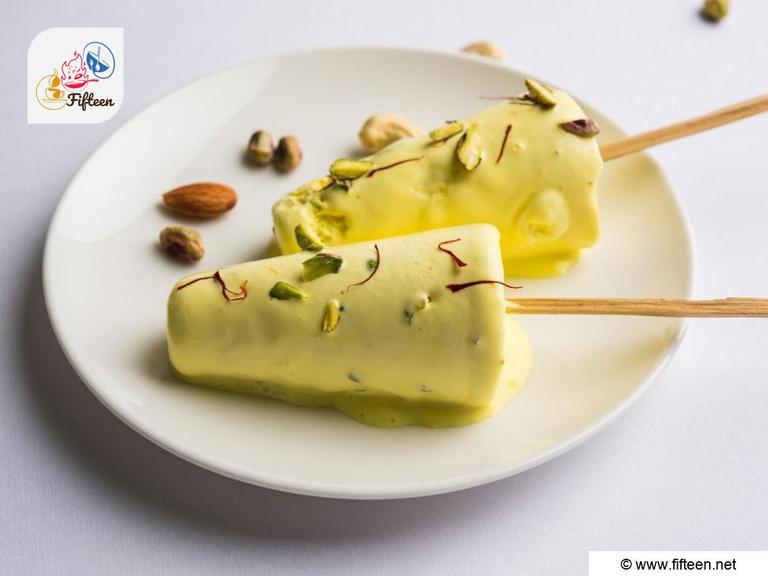
Kulfi
Kulfi is an Indian frozen dairy dessert that is similar to Western-style ice cream and has a richer taste and denser color. It comes in many flavors, with mango kulfi being a particularly beloved option.
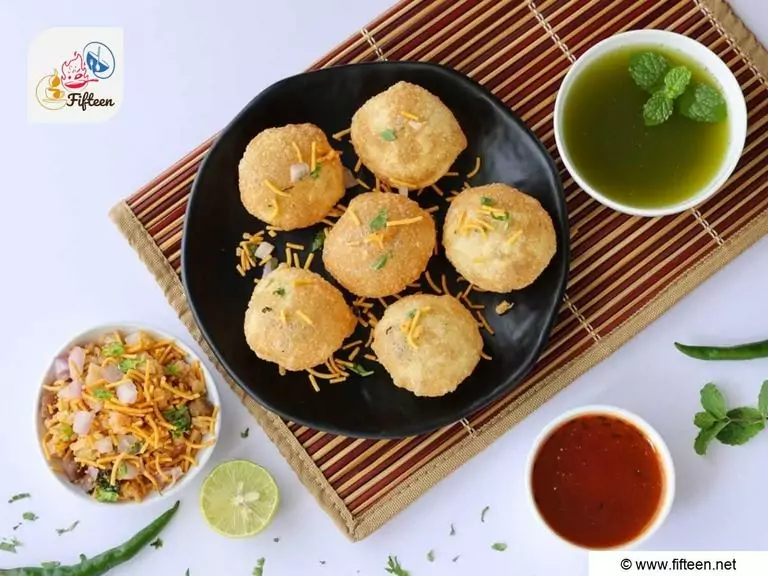
Panipuri
Panipuri is a common Indian street snack consisting of a deep-fried, hollow bread ball filled with many flavorful ingredients, including tamarind chutney.
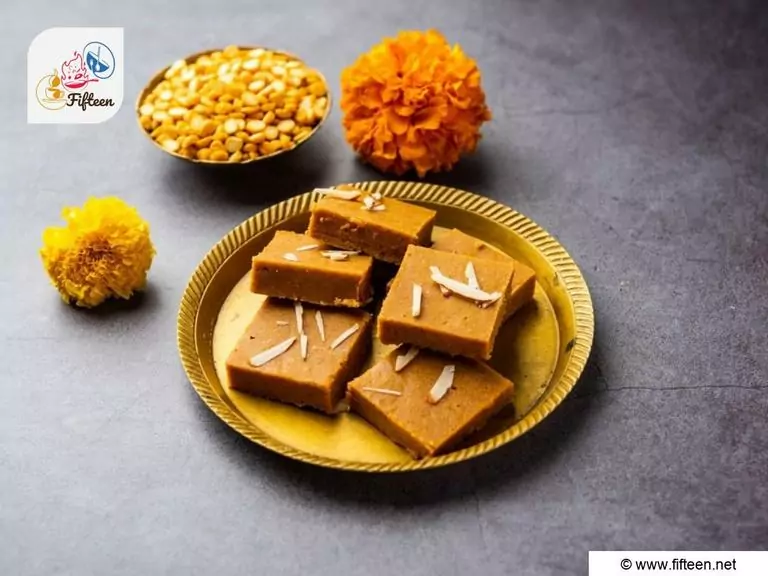
Barfi
Barfi, also known as burfi, is a sweet dessert consisting of condensed milk and various garnishes, such as coconut, ground nuts, or milk powder.
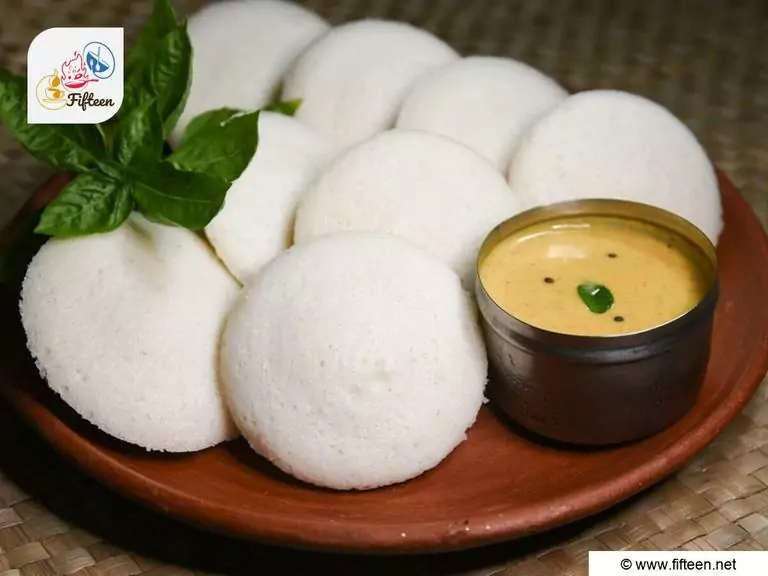
Idli
Idli, also spelled as idly, is an Indian steamed cake made with a batter of fermented rice and black lentils. It is mostly served alongside coconut chutney.
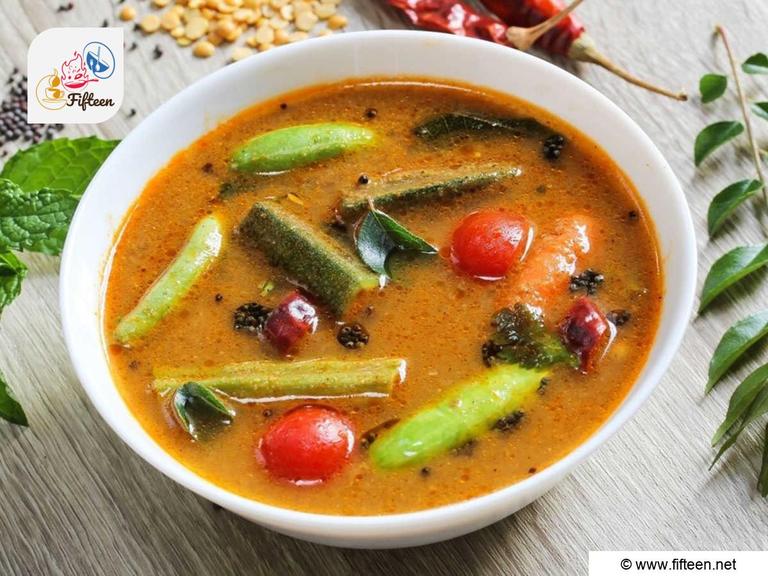
Sambar
Sambar is an Indian lentil-based vegetable stew flavored with coconut and tamarind broth.
These specialties are just a taste of what Indian dishes have to offer. Make sure that you explore the full list!
I will cover common Indian beverages that contain fruits in the next section.
Which Indian Beverages Make Use of Fruits?
Below are some Indian beverages that use the refreshing sweetness and tanginess of local fruits to great effect.
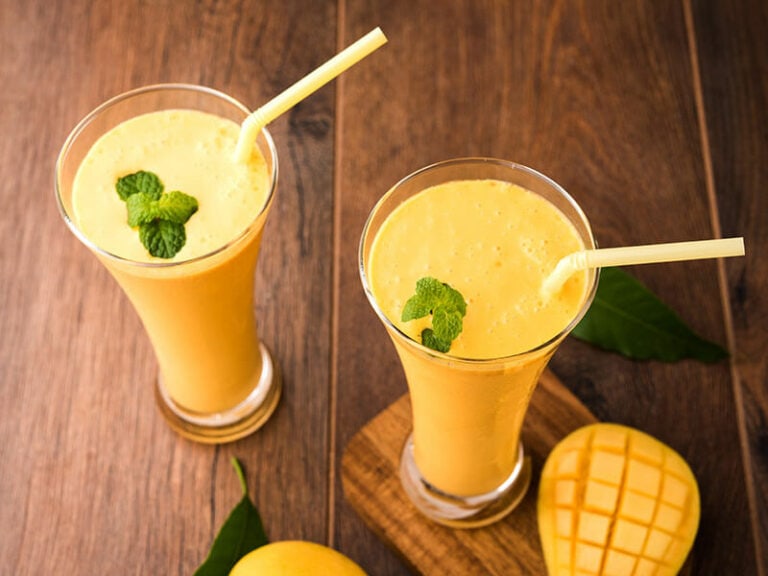
Lassi
Lassi is a thick Indian yogurt-based beverage that features many aromatic ingredients for extra deliciousness, such as spices, flavored water, and fruits. Mango lassi is a common treat in many parts of India.
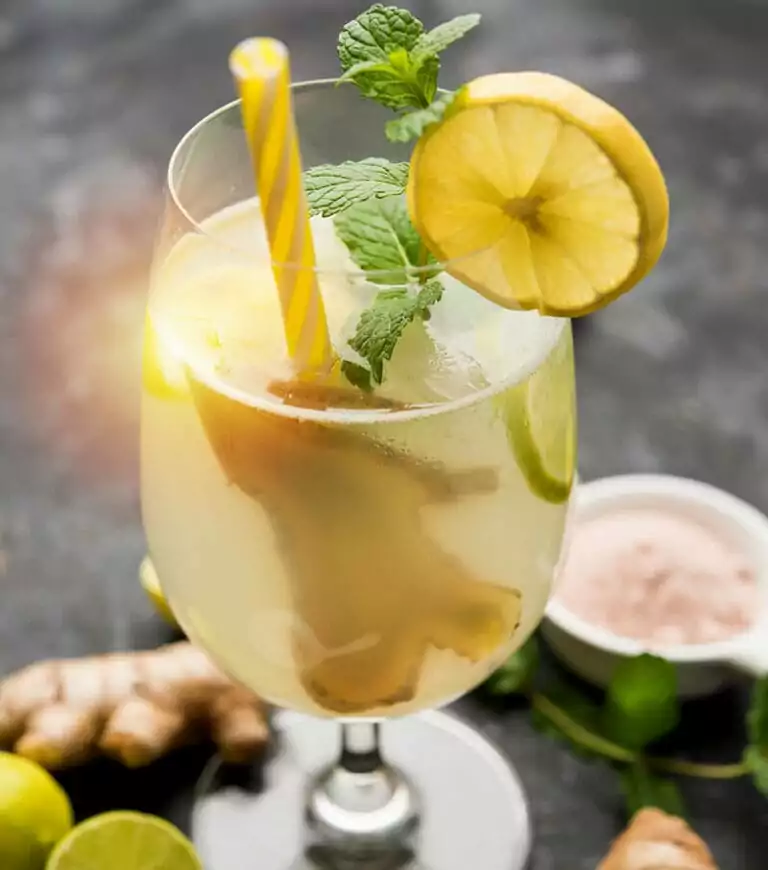
Shikanji
Shikanji, or Indian lemonade, is a favorite cooling beverage in the country. Compared to regular lemonade, it is more flavorful due to the incorporation of spices.
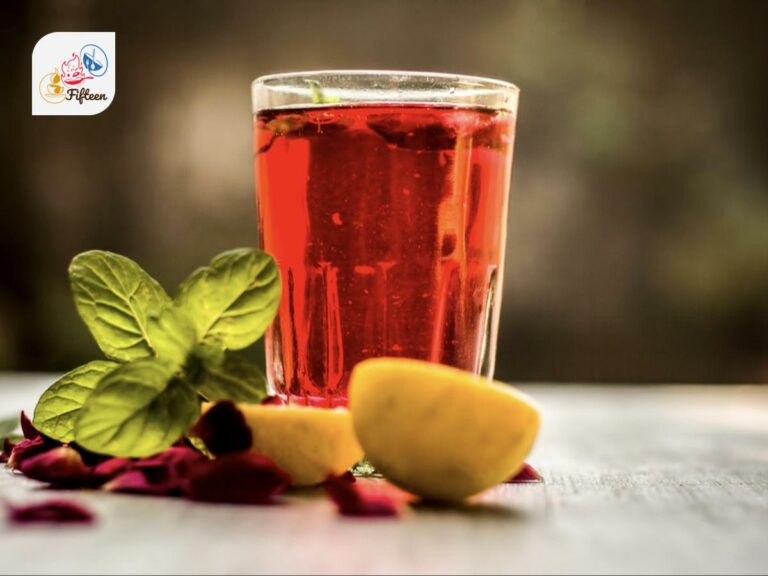
Sharbat
Sharbat is an aromatic Indian drink made with water, sugar, rose syrup, and optional fruits or fruit juices. Many types of fruits are suitable for preparing this sweet beverage, such as mangoes, lemons, wood apples, and phalsa.
Fruits impart an invigorating taste to these drinks, but there are many wonderful beverages in India that are sure to capture your imagination.
Fruits and vegetables in India are an important topic, so I will guide you to the most popular vegetables in India, too.
Which Are the Most Popular Vegetables in India?
Indians use vegetables extensively in their cooking, especially when it comes to making the numerous vegetarian and vegan dishes that their country is famous for. Below are some of the most popular options.
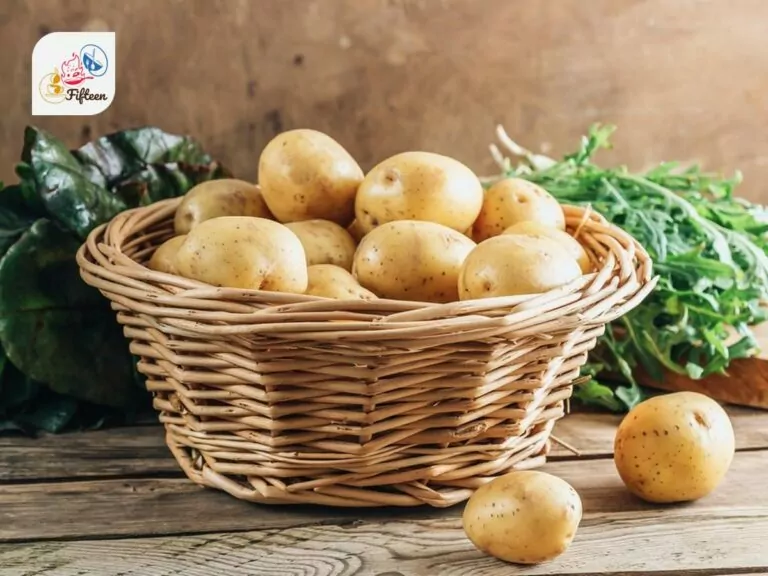
Potato
Potato is a staple root vegetable in Indian cuisine. This versatile tuber appears in numerous curries, snacks, and side dishes.
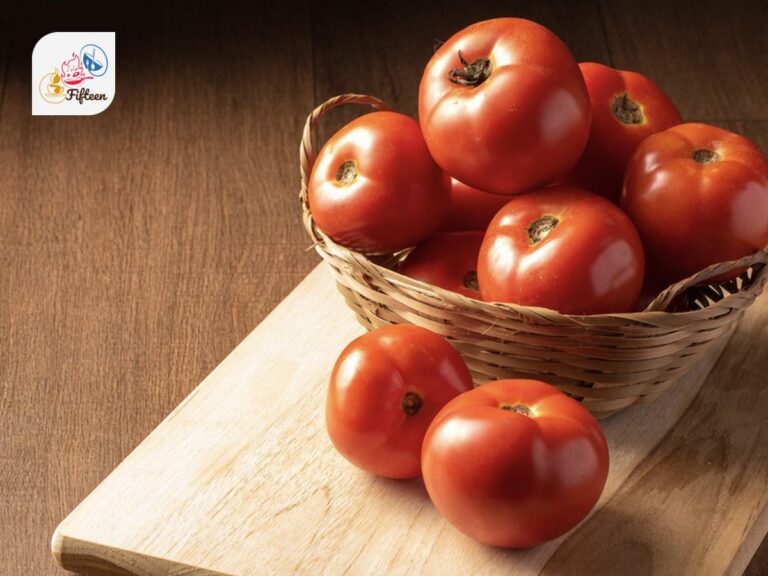
Tomato
Tomato provides a tangy base for various sauces, curries, and chutneys in Indian cuisine.
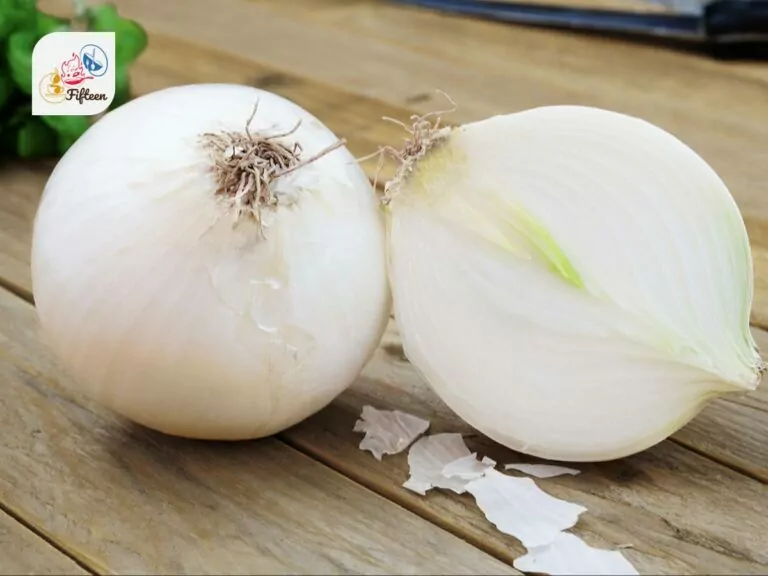
Onion
Onion adds strong flavors and aromas to many Indian recipes, especially curries and rice dishes, contributing to their famously robust flavors.
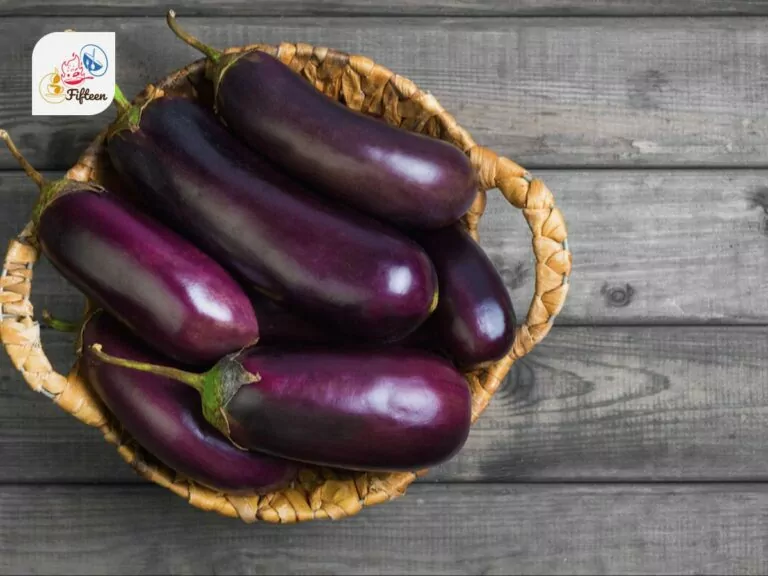
Eggplant
Eggplant is a flexible vegetable that is widely used in many Indian dishes, such as vegetable curries and stews.
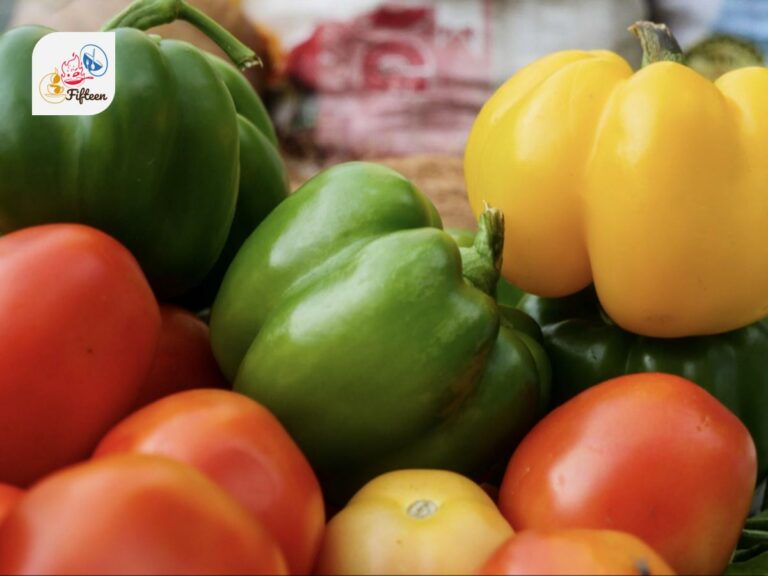
Bell Pepper
Bell pepper contributes vibrant colors and a mildly grassy flavor to Indian cuisine, from stir-fries to curries.
Do you want to explore other important vegetables from India? The diverse array of offerings in this country won’t let you down!
Have you ever tried any fruits from India? I’d love to hear about your experience, so go ahead and share your story in the comment section. Before you leave, remember to share this post with your friends and fellow food lovers!

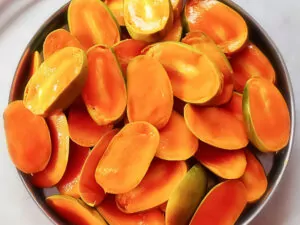
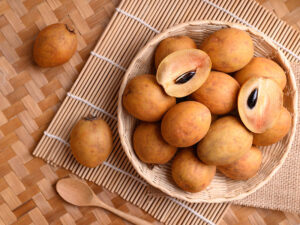
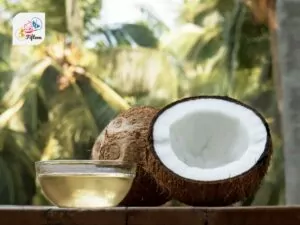
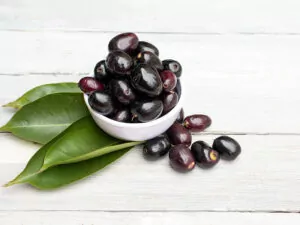

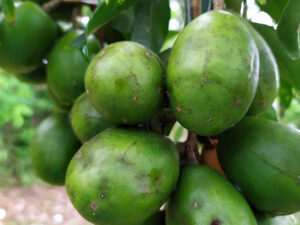
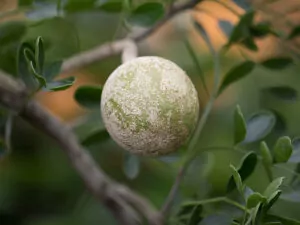
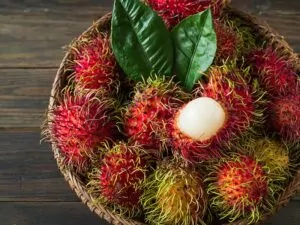
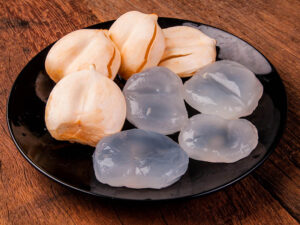
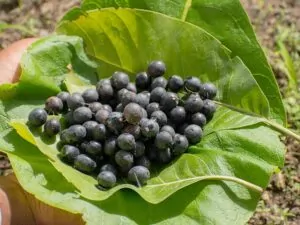
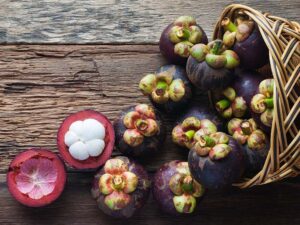
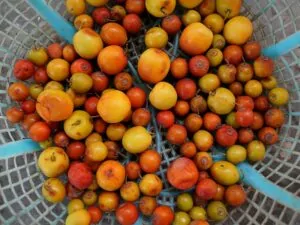
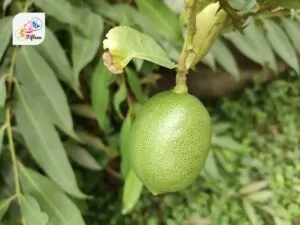
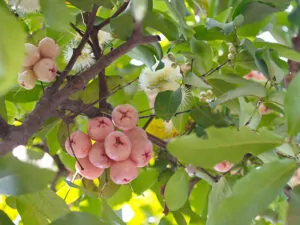
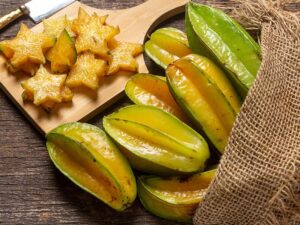
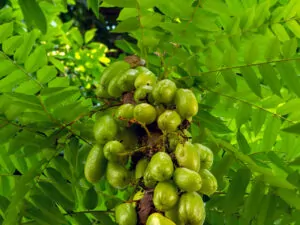
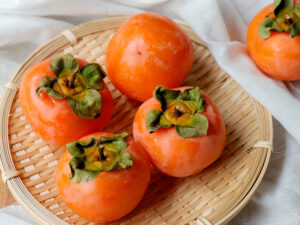
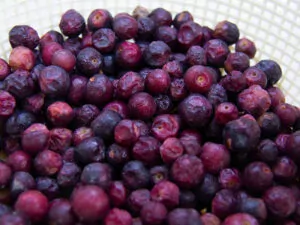
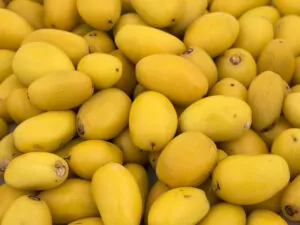
Jamie Scott
Editor in Chief, Senior Content Writer
Expertise
Home Cooking, Meal Planning, Recipe Development, Baking and Pastry, Food Editor, Cooking-video Maker, Western Food Evaluation Expert
Education
Le Cordon Bleu College of Culinary Arts
Local Community College, New York, NY
Jamie Scott is a skilled culinary expert and content creator specializing in Western cuisine. With over 15 years in the culinary field and formal training from Le Cordon Bleu, Paris, Jamie deeply understands how to blend nutrition with delicious flavors. His passion for cooking matches his commitment to making healthy eating accessible and enjoyable.
On Fifteen.net, Jamie brings a fresh perspective to classic dishes and beverages, offering readers insightful recipes, cooking tips, and a fresh view on meal planning that emphasizes taste, health, and simplicity.